This article is part of our NBA Mock Draft series.
With the NBA regular season nearing its end, we turn to one of my favorite annual traditions – the way-too-early top 12 for the following season. There are a lot of similarities to last year's list, though the tier breaks are in new places a few new names have jumped into consideration. There remains a legitimate debate about who should be No. 1. There is absolutely no debate about No. 3. And spots four through 14 are a chaotic jumble. So let's get to it: how am I currently ranking the first round for the 2025-6 Fantasy season?
First Pick Options
1. Victor Wembanyama, Spurs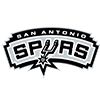
Managers lucky enough to have the number one pick next fall will have to weigh two decisions: do I prefer upside to floor? Do I prefer the strategic advantage of blocks or assists? At just 20 years old, Wembanyama proved that he is already good enough to warrant consideration at the top of Fantasy drafts. Do managers think he will continue to improve in his age-21 season? He has so far avoided normal NBA injuries, but will managers be spooked by his blood clotting condition that cut short his sophomore campaign? Blocks and assists are Fantasy's two scarcest categories – which would managers prefer to prioritize with their first pick?
Both Wembanyama and Nikola Jokic are awesome, and it's completely justifiable to take either with your first pick. I'm going to lean Wembanyama, as long as we hear that he's on track to play Opening Night. He's held up physically so far, and the possibility of continued improvement is so tempting. Both provide incredible strategic advantages, but I like Wembanyama's ability to block more than 50% more shots than anyone else, slightly more than Jokic's (absurdly high) out-of-position assists.
2. Nikola Jokic, Nuggets
If we're being honest, my real preference might be just to get the No. 2 pick. Both of these players are awesome, and the value gained by going slightly earlier in rounds two, four, and six is adequate compensation (also I prefer the drafting experience of the 2 & 11 slots to the 1 & 12 slots, but that's a conversation for a different day). Jokic gives you elite-point guard-level assists without filling up your point guard slot. That's a massive strategic advantage. He's durable, and he only hurts in one category (blocks). It's an amazing statement about the state of the NBA and Fantasy basketball that we're even considering Jokic as anything other than a runaway No. 1 pick.
The locked-in all leagues no debate No. 3 pick
3. Shai Gilgeous-Alexander, Thunder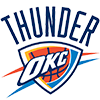
Gilgeous-Alexander's ADP next offseason should be exactly 3.0, with a standard deviation of 0.0. Reasonable people can debate pushing Jokic ahead of Wembanyama for the top spot, but virtually no one will seriously consider pushing a third option ahead of either big man. The gap between those two and Gilgeous-Alexander at No. 3 is almost as large as the gap between Gilgeous-Alexander and the rest of the field. The standardized measurement for Fantasy ranks uses z-score measurements – that ranking system has some known flaws (for example, it overrates high volume steals), but it's worth noting that z-score ranks actually put Gilgeous-Alexander just above Wembanyama in per-game production in 2024-25. The game between those two and fourth-place Anthony Davis was the same as the gap between Davis and Cameron Johnson (52nd ranked). Gilgeous-Alexander may have difficulty matching his 2024-25 output next year, but I say that only
because it was one of the best campaigns by a guard in the entire 78 seasons of NBA history. His numbers this year, 33-5-6 while shooting 52-37-90 and leading a 66-plus-win team, put him on lists with Michael Jordan, Stephen Curry, and sometimes no one else (depending on where you set the filters). SGA will be entering his age-27 season, which is often a special year for NBA superstars – if he hadn't just put up historic numbers, I would say he was likely to continue improving. Jokic and Wembanyama are so good, and their skillsets are such perfect fits for the Fantasy game, that I still can't consider taking Gilgeous-Alexander above either. But no one else enters the conversation for the No. 3 pick.
Where the draft really starts
4. Luka Doncic, Lakers
Fantasy-wise, 2024-25 was arguably Doncic's worst non-rookie season. And his numbers as a Laker are even worse than his numbers from before the trade. You could look at this information like Mavericks GM Nico Harrison apparently did and decide the 26-year-old All-NBA superstar is already in decline, perhaps due to poor fitness and drinking too many high-calorie beverages. Or you could chalk up the down year to the left calf injury that cost him nearly two months, and continued to impact his performance long after he returned. Perhaps Harrison's bet – that Doncic doesn't take good enough care of himself and injuries like this will increase in frequency going forward – will prove accurate. But we don't have enough evidence yet to start assuming Doncic is suddenly frail. And despite a season that can fairly be described as the "worst of his career" (non-rookie division), he was still a top-six player when he was available. After Jokic, he's the best anchor available for the three main volume categories, he drains tons of threes, and most years his FG% is break-even or better. It's OK to consider several different names here at the four spot, but I'm going to stick with Doncic again in 2025-26.
5. Tyrese Haliburton, Pacers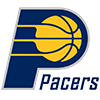
I confess, I've bordered on overhyping Haliburton in both of the last two seasons. On the other hand, Haliburton was a top-six player before a January hamstring injury sidetracked his 2023-24 season, and he's been top-five this season if you exclude the first seven weeks (he falls to 14 th in 8-cat over the entire 2024-25 campaign) – so maybe my hype was on target? In hindsight, it seems as though it took him a full 10-plus months to recover his pre-hamstring injury form, fitness, and confidence. But now all of those have been back for almost an entire productive season, and the All-NBA point guard will be entering his age-25 season. He might be the lowest-scoring player to get taken in Fantasy's first round, but he'll balance that out by competing for the league's assist title. He's a bigger health risk than Jayson Tatum or Cade Cunningham, but he's probably equivalent or less risky than anyone else remaining in this column.
6. Jayson Tatum, Celtics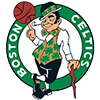
Tatum is the quintessential "you can't win your draft in the first round, but you can lose it" pick. He is 27 years old. There might be a little bit of improvement left, but at this point, we're probably pretty close to seeing what his peak is, if we haven't already seen it. And that peak is not a top-five per-game Fantasy producer. That's just not who he is. But he is one of the most durable stars in the NBA, and he almost always hovers right around the 10th overall per-game rank. What you sacrifice in upside, you (hopefully) gain in stability. Of course, fluke injuries can happen to anyone eventually – I can't guarantee Tatum's health – but it's a much safer bet than anyone else you would consider drafting at this point.
7. Stephen Curry, Warriors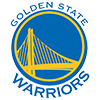
At 37 years old, Curry keeps chugging along. Not only does he remain a reliable top-10 producer, but his numbers actually improved after the Jimmy Butler trade. The greatest shooter of all time continues to dominate the three-point category, and he's one of the most high-impact FT% players in Fantasy. Health-wise actually been one of the safer players you'll consider in the first round, and production-wise, he seems like a good bet to continue providing top-10 per-game numbers.
8. Giannis Antetokounmpo, Bucks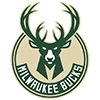 ?
?
Rumors abound as to whether Antetokounmpo will return to Milwaukee if the Bucks exit the playoffs early – and I don't think I'm going to pick the Bucks against their likely first-round matchup of the Pacers. However, no matter where he ends up, Antetokounmpo's game is unlikely to change much. He's a dominant scorer and rebounder, a way-better-than-average passer for a big man, and one of Fantasy's highest-impact FG% shooters. He also basically never shoots threes and completely tanks your free-throw percentage. The big difference a new team could have is on defense. Blocks, in particular, are very susceptible to team schemes and surrounding personnel. While it's possible the two-time MVP takes a slight hit in scoring and/or assists depending on where he lands, moving away from Brook Lopez has a good chance of allowing the dominant monster to increase his blocks. Drafting Antetokounmpo basically forces a specific strategy, but in punt-FT builds, he has remained a top-five option.
9. Cade Cunningham, Pistons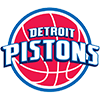
It seems like Cunningham has finally figured it out. And the use of "finally" may be unfair, given that this is the first time the 23-year-old guard has simultaneously played alongside capable floor-spacers and had a head coach who bothered to learn the whole 15-man roster's names. Amazing what happens when you finally put a talented player in a position to succeed! He still turns the ball over a ton, but he's been a top-10 producer in 8-cat since the All-Star break. His stats over these last two months are nearly identical to James Harden's (except that Harden makes more threes and Cunningham's FG% is much better). If Cunningham can continue to improve, this rank may actually be too low.
10. Anthony Davis, Mavericks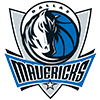
If I trusted Mavericks head coach Jason Kidd, I'd rank Davis fourth. As I say every year at this time, Davis has a compelling case for the title of second-best Fantasy producer this millennium (Kevin Durant is the clear Gold Medalist). Davis has been a top-eight per-game Fantasy producer in 10 of his 13 seasons, and he remained top-40 in all three that he missed (his rookie season and two injury-riddled post-bubble seasons when he set career-lows in games played). Unless he ends this season with back-to-back Tony Snells, he will have nine top-four finishes in 9-cat, and seven top-five finishes in 8-cat. The litany of specific accolades isn't what matters, the point is that he's always amazing for Fantasy. And Dallas will need him to shoulder an even bigger load than Los Angeles did. As long as Davis plays, he's an excellent bet to finish fourth in per-game production next season. And while he does get hurt a lot, he plays more games than he gets credit for – he's played at least 60 games in eight of 13 seasons, including 76 in 2023-24, and he probably could have reached 60 again this season if not for the combination of the Kyrie Irving injury and the Suns' implosion*. The probability of Davis carrying an increased load, however, is why I dropped him a few spots in these ranks. When Irving tore his ACL, it was entirely predictable. Just days away from his 33rd birthday, Irving has played more minutes over the previous month than in any previous month of his NBA career. Yet, when coach Kidd was asked about the possibility that Irving's workload contributed to the injury, Kidd treated the premise of the question as preposterous. It was a display of stubborn refusal to self-reflect that should give pause to any manager considering drafting either of Kidd's injury-prone stars (Davis and Irving). The potential reward for Davis is so great that I can't drop Davis any lower.
*Davis was initially projected to return in early March from his abductor injury, but following the Irving injury, the Mavericks flirted with the idea of tanking and shutting Davis down for the season. However, due to shocking levels of the Suns' ineptitude, the Mavericks remained a likely Play-In team, so Davis returned in late March. Then, because the Suns continued to stink, Dallas was even able to rest Davis for multiple back-to-backs without risking their Play-In status. Davis is on track to finish with 52 games played. It is reasonable to postulate that he could have played eight more games through March and April if not for this specific combination of events.
11. Kevin Durant, Not Suns
Even dejected and 36 years old, Durant can't help but put up top-10 Fantasy numbers. He doesn't know how not to. It seems like he's almost certain to move on from Phoenix this offseason, which will presumably improve his mental outlook and nightly energy level. Durant rivals Davis for the biggest injury risk in the first round, but his ceiling is nearly as high, and his well-rounded Fantasy game allows managers to preserve flexibility much better than most other players you'd consider at this range of the draft.
12. Karl-Anthony Towns, Knicks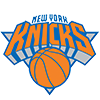
For the entire 2024-25 season, Towns was right back where he's spent most of his career – firmly
entrenched inside the Fantasy top 10. However, digging deeper, there are a few reasons I've dropped him to the end of the first round. First, his play fell off a little bit over the second half of the season, despite Jalen Brunson missing a lot of games (which, in theory, should have helped Towns by increasing his scoring and usage). Second, I'm concerned about Mikal Bridges – specifically, what happens if coach Tom Thibodeau (or a new coach?) realizes how underutilized the versatile wing has been. Bridges is capable of more than they've asked of him, and more touches for Bridges will have to come from Towns (and Brunson). Finally, 35.0 minutes per game is simply too many for a 30-year-old center. If Thibodeau is replaced, a newcomer would most likely reduce that load. If Thibodeau remains and attempts to continue pushing Towns this hard, then injury or a productivity drop-off becomes increasingly likely. I've focused on the downside because the upside case for Towns is pretty straightforward: he's been a top-10 per-game player almost every season of his career. The Knicks roster is likely to remain mostly similar, which means Towns' role and situation are unlikely to meaningfully change. He's very good.
Honorable Mention
Anthony Edwards, Timberwolves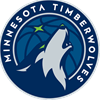 – "There's usually a lot of overlap between the Fantasy top-10 and the actual basketball top-10. If Edwards isn't already in the real basketball top-10, I expect he'll get there next year." That's what I wrote about Edwards here last year, and it's still true. The biggest difference is that now few would dispute Edwards' place in the real basketball top-10, and he's already established himself as a clear Fantasy second-round pick.
– "There's usually a lot of overlap between the Fantasy top-10 and the actual basketball top-10. If Edwards isn't already in the real basketball top-10, I expect he'll get there next year." That's what I wrote about Edwards here last year, and it's still true. The biggest difference is that now few would dispute Edwards' place in the real basketball top-10, and he's already established himself as a clear Fantasy second-round pick.
James Harden, Clippers – Many analysts will probably bump him into the first round. Kawhi Leonard will never play a full season again, but he does play sometimes, and there's a risk of Harden's numbers dropping in those games (though this season it was basically a wash). I also worry about the 35-year-old with a notorious affection for nightlife and bruising physical style of play's ability to remain durable – he's been impressively resilient so far, but he's entering his late 30s and has dealt with far more injuries in the last five years than over the previous decade.
– Many analysts will probably bump him into the first round. Kawhi Leonard will never play a full season again, but he does play sometimes, and there's a risk of Harden's numbers dropping in those games (though this season it was basically a wash). I also worry about the 35-year-old with a notorious affection for nightlife and bruising physical style of play's ability to remain durable – he's been impressively resilient so far, but he's entering his late 30s and has dealt with far more injuries in the last five years than over the previous decade.
Joel Embiid, 76ers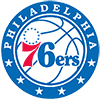 – How far are we going to let the guy fall in drafts? In the 2023-24 season, he took the No. 1 per-game spot in a runaway (albeit in a shortened season), and the season before that, he was neck-and-neck with Jokic for the top spot in Fantasy ranks. He may never reach that productivity again, and the injury risk is obviously monumental, but – for example – if he can play 60% of the season at 60% of his previous levels, that would still math out as someone who is roughly top 15 in per-game production (which I think are more important) and roughly top 70 in season-total Fantasy ranks.
– How far are we going to let the guy fall in drafts? In the 2023-24 season, he took the No. 1 per-game spot in a runaway (albeit in a shortened season), and the season before that, he was neck-and-neck with Jokic for the top spot in Fantasy ranks. He may never reach that productivity again, and the injury risk is obviously monumental, but – for example – if he can play 60% of the season at 60% of his previous levels, that would still math out as someone who is roughly top 15 in per-game production (which I think are more important) and roughly top 70 in season-total Fantasy ranks.
Trae Young, Hawks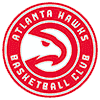 – Competing for the league lead in assists gets you consideration for the first round, even if some of his other numbers got worse last season.
– Competing for the league lead in assists gets you consideration for the first round, even if some of his other numbers got worse last season.
Jalen Johnson, Hawks – The Hawks' actual foundational building block made it into Fantasy's top 20 before a shoulder injury cut his season short. He'll have to continue improving to justify early second-round consideration, but he's only 23 years old and barely played in his first two seasons. His ability to rack up double-digit rebounds and a block a game with small forward eligibility is a huge strategic advantage, too.
– The Hawks' actual foundational building block made it into Fantasy's top 20 before a shoulder injury cut his season short. He'll have to continue improving to justify early second-round consideration, but he's only 23 years old and barely played in his first two seasons. His ability to rack up double-digit rebounds and a block a game with small forward eligibility is a huge strategic advantage, too.
Devin Booker, Suns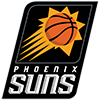 – He's more of a late-second-round pick at the moment, but he could vault up several spots depending on how the Suns' offseason shakes out.
– He's more of a late-second-round pick at the moment, but he could vault up several spots depending on how the Suns' offseason shakes out.
Zion Williamson, Pelicans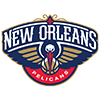 – Maybe he'll never stay healthy, and he's another player who only works in a punt-FT build. But, man, his numbers were really good when he played this year.
– Maybe he'll never stay healthy, and he's another player who only works in a punt-FT build. But, man, his numbers were really good when he played this year.
Trey Murphy, Pelicans – Oh, you balk at my mentioning Williamson? Then you should be considering Murphy. From Thanksgiving week until his season-ending shoulder injury in March (over half the season), Murphy was a top 20 player in 9-cat (top 25 in 8-cat). He turns 25 this summer and is the clear best non-Zion player on the roster. There's no way you should consider him before Harden, Edwards, or the players actually listed in the top 12, above, but it's ok to start considering him early in the second round.
– Oh, you balk at my mentioning Williamson? Then you should be considering Murphy. From Thanksgiving week until his season-ending shoulder injury in March (over half the season), Murphy was a top 20 player in 9-cat (top 25 in 8-cat). He turns 25 this summer and is the clear best non-Zion player on the roster. There's no way you should consider him before Harden, Edwards, or the players actually listed in the top 12, above, but it's ok to start considering him early in the second round.
Amen Thompson, Rockets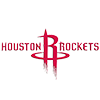 – It's probably too soon? Right? He shouldn't actually enter the second round discussion yet. Right? I mean, it's not like the most athletic player in the NBA was already inside the top-30 in punt-FT builds even though he only started half the season. Oh, wait, he was? And he was top-15 in punt-FT after the All-Star break? Huh. Interesting.
– It's probably too soon? Right? He shouldn't actually enter the second round discussion yet. Right? I mean, it's not like the most athletic player in the NBA was already inside the top-30 in punt-FT builds even though he only started half the season. Oh, wait, he was? And he was top-15 in punt-FT after the All-Star break? Huh. Interesting.












